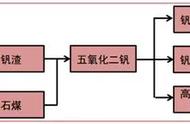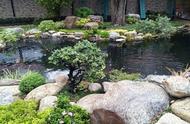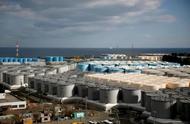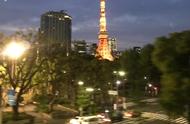When Paul Jobs was mustered out of the Coast Guard after World War II, he made a wager with his crewmates. They had arrived in San Francisco, where their ship was decommissioned, and Paul bet that he would find himself a wife within two weeks. He was a taut, tattooed engine mechanic, six feet tall, with a passing resemblance to James Dean. But it wasn’t his looks that got him a date with Clara Hagopian, a sweet-humored daughter of Armenian immigrants. It was the fact that he and his friends had a car, unlike the group she had originally planned to go out with that evening. Ten days later, in March 1946, Paul got engaged to Clara and won his wager. It would turn out to be a happy marriage, one that lasted until death parted them more than forty years later. Paul Reinhold Jobs had been raised on a dairy farm in Germantown, Wisconsin. Even though his father was an alcoholic and sometimes abusive, Paul ended up with a gentle and calm disposition under his leathery exterior. After dropping out of high school, he wandered through the Midwest picking up work as a mechanic until, at age nineteen, he joined the Coast Guard, even though he didn’t know how to swim. He was deployed on the USS General M. C. Meigs and spent much of the war ferrying troops to Italy for General Patton. His talent as a machinist and fireman earned him commendations, but he occasionally found himself in minor trouble and never rose above the rank of seaman. Clara was born in New Jersey, where her parents had landed after fleeing the Turks in Armenia, and they moved to the Mission District of San Francisco when she was a child. She had a secret that she rarely mentioned to anyone: She had been married before, but her husband had been killed in the war. So when she met Paul Jobs on that first date, she was primed to start a new life. Like many who lived through the war, they had experienced enough excitement that, when it was over, they desired simply to settle down, raise a family, and lead a less eventful life. They had little money, so they moved to Wisconsin and lived with Paul’s parents for a few years, then headed for Indiana, where he got a job as a machinist for International Harvester. His passion was tinkering with old cars, and he made money in his spare time buying, restoring, and selling them. Eventually he quit his day job to become a full-time used car salesman. Clara, however, loved San Francisco, and in 1952 she convinced her husband to move back there. They got an apartment in the Sunset District facing the Pacific, just south of Golden Gate Park, and he took a job working for a finance company as a “repo man,” picking the locks of cars whose owners hadn’t paid their loans and repossessing them. He also bought, repaired, and sold some of the cars, making a decent enough living in the process. There was, however, something missing in their lives. They wanted children, but Clara had suffered an ectopic pregnancy, in which the fertilized egg was implanted in a fallopian tube rather than the uterus, and she had been unable to have any. So by 1955, after nine years of marriage, they were looking to adopt a child. Like Paul Jobs, Joanne Schieble was from a rural Wisconsin family of German heritage. Her father, Arthur Schieble, had immigrated to the outskirts of Green Bay, where he and his wife owned a mink farm and dabbled successfully in various other businesses, including real estate and photoengraving. He was very strict, especially regarding his daughter’s relationships, and he had strongly disapproved of her first love, an artist who was not a Catholic. Thus it was no surprise that he threatened to cut Joanne off completely when, as a graduate student at the University of Wisconsin, she fell in love with Abdulfattah “John” Jandali, a Muslim teaching assistant from Syria. Jandali was the youngest of nine children in a prominent Syrian family. His father owned oil refineries and multiple other businesses, with large holdings in Damascus and Homs, and at one point pretty much controlled the price of wheat in the region. His mother, he later said, was a “traditional Muslim woman” who was a “conservative, obedient housewife.” Like the Schieble family, the Jandalis put a premium on education. Abdulfattah was sent to a Jesuit boarding school, even though he was Muslim, and he got an undergraduate degree at the American University in Beirut before entering the University of Wisconsin to pursue a doctoral degree in political science. In the summer of 1954, Joanne went with Abdulfattah to Syria. They spent two months in Homs, where she learned from his family to cook Syrian dishes. When they returned to Wisconsin she discovered that she was pregnant. They were both twenty-three, but they decided not to get married. Her father was dying at the time, and he had threatened to disown her if she wed Abdulfattah. Nor was abortion an easy option in a small Catholic community. So in early 1955, Joanne traveled to San Francisco, where she was taken into the care of a kindly doctor who sheltered unwed mothers, delivered their babies, and quietly arranged closed adoptions. Joanne had one requirement: Her child must be adopted by college graduates. So the doctor arranged for the baby to be placed with a lawyer and his wife. But when a boy was born—on February 24, 1955—the designated couple decided that they wanted a girl and backed out. Thus it was that the boy became the son not of a lawyer but of a high school dropout with a passion for mechanics and his salt-of-the-earth wife who was working as a bookkeeper. Paul and Clara named their new baby Steven Paul Jobs. When Joanne found out that her baby had been placed with a couple who had not even graduated from high school, she refused to sign the adoption papers. The standoff lasted weeks, even after the baby had settled into the Jobs household. Eventually Joanne relented, with the stipulation that the couple promise—indeed sign a pledge—to fund a savings account to pay for the boy’s college education. There was another reason that Joanne was balky about signing the adoption papers. Her father was about to die, and she planned to marry Jandali soon after. She held out hope, she would later tell family members, sometimes tearing up at the memory, that once they were married, she could get their baby boy back. Arthur Schieble died in August 1955, after the adoption was finalized. Just after Christmas that year, Joanne and Abdulfattah were married in St. Philip the Apostle Catholic Church in Green Bay. He got his PhD in international politics the next year, and then they had another child, a girl named Mona. After she and Jandali divorced in 1962, Joanne embarked on a dreamy and peripatetic life that her daughter, who grew up to become the acclaimed novelist Mona Simpson, would capture in her book Anywhere but Here. Because Steve’s adoption had been closed, it would be twenty years before they would all find each other. Steve Jobs knew from an early age that he was adopted. “My parents were very open with me about that,” he recalled. He had a vivid memory of sitting on the lawn of his house, when he was six or seven years old, telling the girl who lived across the street. “So does that mean your real parents didn’t want you?” the girl asked. “Lightning bolts went off in my head,” according to Jobs. “I remember running into the house, crying. And my parents said, ‘No, you have to understand.’ They were very serious and looked me straight in the eye. They said, ‘We specifically picked you out.’ Both of my parents said that and repeated it slowly for me. And they put an emphasis on every word in that sentence.” Abandoned. Chosen. Special. Those concepts became part of who Jobs was and how he regarded himself. His closest friends think that the knowledge that he was given up at birth left some scars. “I think his desire for complete control of whatever he makes derives directly from his personality and the fact that he was abandoned at birth,” said one longtime colleague, Del Yocam. “He wants to control his environment, and he sees the product as an extension of himself.” Greg Calhoun, who became close to Jobs right after college, saw another effect. “Steve talked to me a lot about being abandoned and the pain that caused,” he said. “It made him independent. He followed the beat of a different drummer, and that came from being in a different world than he was born into.” Later in life, when he was the same age his biological father had been when he abandoned him, Jobs would father and abandon a child of his own. (He eventually took responsibility for her.) Chrisann Brennan, the mother of that child, said that being put up for adoption left Jobs “full of broken glass,” and it helps to explain some of his behavior. “He who is abandoned is an abandoner,” she said. Andy Hertzfeld, who worked with Jobs at Apple in the early 1980s, is among the few who remained close to both Brennan and Jobs. “The key question about Steve is why he can’t control himself at times from being so reflexively cruel and harmful to some people,” he said. “That goes back to being abandoned at birth. The real underlying problem was the theme of abandonment in Steve’s life.” Jobs dismissed this. “There’s some notion that because I was abandoned, I worked very hard so I could do well and make my parents wish they had me back, or some such nonsense, but that’s ridiculous,” he insisted. “Knowing I was adopted may have made me feel more independent, but I have never felt abandoned. I’ve always felt special. My parents made me feel special.” He would later bristle whenever anyone referred to Paul and Clara Jobs as his “adoptive” parents or implied that they were not his “real” parents. “They were my parents 1,000%,” he said. When speaking about his biological parents, on the other hand, he was curt: “They were my sperm and egg bank. That’s not harsh, it’s just the way it was, a sperm bank thing, nothing more.” Silicon Valley The childhood that Paul and Clara Jobs created for their new son was, in many ways, a stereotype of the late 1950s. When Steve was two they adopted a girl they named Patty, and three years later they moved to a tract house in the suburbs. The finance company where Paul worked as a repo man, CIT, had transferred him down to its Palo Alto office, but he could not afford to live there, so they landed in a subdivision in Mountain View, a less expensive town just to the south. There Paul tried to pass along his love of mechanics and cars. “Steve, this is your workbench now,” he said as he marked off a section of the table in their garage. Jobs remembered being impressed by his father’s focus on craftsmanship. “I thought my dad’s sense of design was pretty good,” he said, “because he knew how to build anything. If we needed a cabinet, he would build it. When he built our fence, he gave me a hammer so I could work with him.” Fifty years later the fence still surrounds the back and side yards of the house in Mountain View. As Jobs showed it off to me, he caressed the stockade panels and recalled a lesson that his father implanted deeply in him. It was important, his father said, to craft the backs of cabinets and fences properly, even though they were hidden. “He loved doing things right. He even cared about the look of the parts you couldn’t see.” His father continued to refurbish and resell used cars, and he festooned the garage with pictures of his favorites. He would point out the detailing of the design to his son: the lines, the vents, the chrome, the trim of the seats. After work each day, he would change into his dungarees and retreat to the garage, often with Steve tagging along. “I figured I could get him nailed down with a little mechanical ability, but he really wasn’t interested in getting his hands dirty,” Paul later recalled. “He never really cared too much about mechanical things.” “I wasn’t that into fixing cars,” Jobs admitted. “But I was eager to hang out with my dad.” Even as he was growing more aware that he had been adopted, he was becoming more attached to his father. One day when he was about eight, he discovered a photograph of his father from his time in the Coast Guard. “He’s in the engine room, and he’s got his shirt off and looks like James Dean. It was one of those Oh wow moments for a kid. Wow, oooh, my parents were actually once very young and really good-looking.” Through cars, his father gave Steve his first exposure to electronics. “My dad did not have a deep understanding of electronics, but he’d encountered it a lot in automobiles and other things he would fix. He showed me the rudiments of electronics, and I got very interested in that.” Even more interesting were the trips to scavenge for parts. “Every weekend, there’d be a junkyard trip. We’d be looking for a generator, a carburetor, all sorts of components.” He remembered watching his father negotiate at the counter. “He was a good bargainer, because he knew better than the guys at the counter what the parts should cost.” This helped fulfill the pledge his parents made when he was adopted. “My college fund came from my dad paying $50 for a Ford Falcon or some other beat-up car that didn’t run, working on it for a few weeks, and selling it for $250—and not telling the IRS.” The Jobses’ house and the others in their neighborhood were built by the real estate developer Joseph Eichler, whose company spawned more than eleven thousand homes in various California subdivisions between 1950 and 1974. Inspired by Frank Lloyd Wright’s vision of simple modern homes for the American “everyman,” Eichler built inexpensive houses that featured floor-to-ceiling glass walls, open floor plans, exposed post-and-beam construction, concrete slab floors, and lots of sliding glass doors. “Eichler did a great thing,” Jobs said on one of our walks around the neighborhood. “His houses were smart and cheap and good. They brought clean design and simple taste to lower-income people. They had awesome little features, like radiant heating in the floors. You put carpet on them, and we had nice toasty floors when we were kids.” Jobs said that his appreciation for Eichler homes instilled in him a passion for making nicely designed products for the mass market. “I love it when you can bring really great design and simple capability to something that doesn’t cost much,” he said as he pointed out the clean elegance of the houses. “It was the original vision for Apple. That’s what we tried to do with the first Mac. That’s what we did with the iPod.” Across the street from the Jobs family lived a man who had become successful as a real estate agent. “He wasn’t that bright,” Jobs recalled, “but he seemed to be making a fortune. So my dad thought, ‘I can do that.’ He worked so hard, I remember. He took these night classes, passed the license test, and got into real estate. Then the bottom fell out of the market.” As a result, the family found itself financially strapped for a year or so while Steve was in elementary school. His mother took a job as a bookkeeper for Varian Associates, a company that made scientific instruments, and they took out a second mortgage. One day his fourth-grade teacher asked him, “What is it you don’t understand about the universe?” Jobs replied, “I don’t understand why all of a sudden my dad is so broke.” He was proud that his father never adopted a servile attitude or slick style that may have made him a better salesman. “You had to suck up to people to sell real estate, and he wasn’t good at that and it wasn’t in his nature. I admired him for that.” Paul Jobs went back to being a mechanic. His father was calm and gentle, traits that his son later praised more than emulated. He was also resolute. Jobs described one example: Nearby was an engineer who was working at Westinghouse. He was a single guy, beatnik type. He had a girlfriend. She would babysit me sometimes. Both my parents worked, so I would come here right after school for a couple of hours. He would get drunk and hit her a couple of times. She came over one night, scared out of her wits, and he came over drunk, and my dad stood him down—saying “She’s here, but you’re not coming in.” He stood right there. We like to think everything was idyllic in the 1950s, but this guy was one of those engineers who had messed-up lives. What made the neighborhood different from the thousands of other spindly-tree subdivisions across America was that even the ne’er-do-wells tended to be engineers. “When we moved here, there were apricot and plum orchards on all of these corners,” Jobs recalled. “But it was beginning to boom because of military investment.” He soaked up the history of the valley and developed a yearning to play his own role. Edwin Land of Polaroid later told him about being asked by Eisenhower to help build the U-2 spy plane cameras to see how real the Soviet threat was. The film was dropped in canisters and returned to the NASA Ames Research Center in Sunnyvale, not far from where Jobs lived. “The first computer terminal I ever saw was when my dad brought me to the Ames Center,” he said. “I fell totally in love with it.” Other defense contractors sprouted nearby during the 1950s. The Lockheed Missiles and Space Division, which built submarine-launched ballistic missiles, was founded in 1956 next to the NASA Center; by the time Jobs moved to the area four years later, it employed twenty thousand people. A few hundred yards away, Westinghouse built facilities that produced tubes and electrical transformers for the missile systems. “You had all these military companies on the cutting edge,” he recalled. “It was mysterious and high-tech and made living here very exciting.” In the wake of the defense industries there arose a booming economy based on technology. Its roots stretched back to 1938, when David Packard and his new wife moved into a house in Palo Alto that had a shed where his friend Bill Hewlett was soon ensconced. The house had a garage—an appendage that would prove both useful and iconic in the valley—in which they tinkered around until they had their first product, an audio oscillator. By the 1950s, Hewlett-Packard was a fast-growing company making technical instruments. Fortunately there was a place nearby for entrepreneurs who had outgrown their garages. In a move that would help transform the area into the cradle of the tech revolution, Stanford University’s dean of engineering, Frederick Terman, created a seven-hundred-acre industrial park on university land for private companies that could commercialize the ideas of his students. Its first tenant was Varian Associates, where Clara Jobs worked. “Terman came up with this great idea that did more than anything to cause the tech industry to grow up here,” Jobs said. By the time Jobs was ten, HP had nine thousand employees and was the blue-chip company where every engineer seeking financial stability wanted to work. The most important technology for the region’s growth was, of course, the semiconductor. William Shockley, who had been one of the inventors of the transistor at Bell Labs in New Jersey, moved out to Mountain View and, in 1956, started a company to build transistors using silicon rather than the more expensive germanium that was then commonly used. But Shockley became increasingly erratic and abandoned his silicon transistor project, which led eight of his engineers—most notably Robert Noyce and Gordon Moore—to break away to form Fairchild Semiconductor. That company grew to twelve thousand employees, but it fragmented in 1968, when Noyce lost a power struggle to become CEO. He took Gordon Moore and founded a company that they called Integrated Electronics Corporation, which they soon smartly abbreviated to Intel. Their third employee was Andrew Grove, who later would grow the company by shifting its focus from memory chips to microprocessors. Within a few years there would be more than fifty companies in the area making semiconductors. The exponential growth of this industry was correlated with the phenomenon famously discovered by Moore, who in 1965 drew a graph of the speed of integrated circuits, based on the number of transistors that could be placed on a chip, and showed that it doubled about every two years, a trajectory that could be expected to continue. This was reaffirmed in 1971, when Intel was able to etch a complete central processing unit onto one chip, the Intel 4004, which was dubbed a “microprocessor.” Moore’s Law has held generally true to this day, and its reliable projection of performance to price allowed two generations of young entrepreneurs, including Steve Jobs and Bill Gates, to create cost projections for their forward-leaning products. The chip industry gave the region a new name when Don Hoefler, a columnist for the weekly trade paper Electronic News, began a series in January 1971 entitled “Silicon Valley USA.” The forty-mile Santa Clara Valley, which stretches from South San Francisco through Palo Alto to San Jose, has as its commercial backbone El Camino Real, the royal road that once connected California’s twenty-one mission churches and is now a bustling avenue that connects companies and startups accounting for a third of the venture capital investment in the United States each year. “Growing up, I got inspired by the history of the place,” Jobs said. “That made me want to be a part of it.” Like most kids, he became infused with the passions of the grown-ups around him. “Most of the dads in the neighborhood did really neat stuff, like photovoltaics and batteries and radar,” Jobs recalled. “I grew up in awe of that stuff and asking people about it.” The most important of these neighbors, Larry Lang, lived seven doors away. “He was my model of what an HP engineer was supposed to be: a big ham radio operator, hard-core electronics guy,” Jobs recalled. “He would bring me stuff to play with.” As we walked up to Lang’s old house, Jobs pointed to the driveway. “He took a carbon microphone and a battery and a speaker, and he put it on this driveway. He had me talk into the carbon mike and it amplified out of the speaker.” Jobs had been taught by his father that microphones always required an electronic amplifier. “So I raced home, and I told my dad that he was wrong.” “No, it needs an amplifier,” his father assured him. When Steve protested otherwise, his father said he was crazy. “It can’t work without an amplifier. There’s some trick.” “I kept saying no to my dad, telling him he had to see it, and finally he actually walked down with me and saw it. And he said, ‘Well I’ll be a bat out of hell.’” Jobs recalled the incident vividly because it was his first realization that his father did not know everything. Then a more disconcerting discovery began to dawn on him: He was smarter than his parents. He had always admired his father’s competence and savvy. “He was not an educated man, but I had always thought he was pretty damn smart. He didn’t read much, but he could do a lot. Almost everything mechanical, he could figure it out.” Yet the carbon microphone incident, Jobs said, began a jarring process of realizing that he was in fact more clever and quick than his parents. “It was a very big moment that’s burned into my mind. When I realized that I was smarter than my parents, I felt tremendous shame for having thought that. I will never forget that moment.” This discovery, he later told friends, along with the fact that he was adopted, made him feel apart—detached and separate—from both his family and the world. Another layer of awareness occurred soon after. Not only did he discover that he was brighter than his parents, but he discovered that they knew this. Paul and Clara Jobs were loving parents, and they were willing to adapt their lives to suit a son who was very smart—and also willful. They would go to great lengths to accommodate him. And soon Steve discovered this fact as well. “Both my parents got me. They felt a lot of responsibility once they sensed that I was special. They found ways to keep feeding me stuff and putting me in better schools. They were willing to defer to my needs.” So he grew up not only with a sense of having once been abandoned, but also with a sense that he was special. In his own mind, that was more important in the formation of his personality. School Even before Jobs started elementary school, his mother had taught him how to read. This, however, led to some problems once he got to school. “I was kind of bored for the first few years
大家都知道,盐是生活必需品
以前市场上出售的盐种类比较单一
现在渐渐丰富了起来
什么海盐、加碘盐、矿物盐
遍布商场超市或市井小店
但其实,盐的品种还有很多
下面就带大家
一起来看看来自世界各地的盐吧

盐的种类
盐的来源,分为两大类:海盐和陆盐。海盐味道清爽,并带有清冽的海水、矿物质味道;陆盐又分为岩盐、湖盐和井盐。
海盐
海盐的原料就是海水,海水水份被蒸发后,剩下来的就是海盐。海盐是通过露天盐田日晒的缓慢蒸发方式,使结晶作用发生在盐水表面,结出脆弱的角锥形中空薄片。最后,成形的盐片下沉,凝聚成较大粗粒,就成为了我们最常见的大粒海盐。海盐比一般的精制盐口感更柔和,入口带着矿物质和海水咸鲜味的感觉,回味中还有一丝甘甜。
井盐
井盐是一种在类似于岩盐的地下盐矿里,通过汲卤取盐技术而生产出来的。与海盐相比,井盐的味道更柔和,入口后是鲜味先至,咸味来得很慢,十几秒后,口中隐隐还有一点回甘。而腌制正宗的四川泡菜,必不可少的就是自贡井盐,腌出来的泡菜脆度是最好的。
岩盐
指在地下或山洞内开采的食盐,矿物组成与海盐不同。岩盐形成的年份往往有几百万年之久,又深藏于地底,使其拥有非常丰富的矿物质。喜马拉雅山岩盐就是其中的典型代表,其采自巴基斯坦的凯沃拉(Khewra)盐矿,被认为是世界上最纯净、最天然的矿物盐之一。
湖盐
湖盐是人类最早发现的食用盐类,湖盐指盐湖中采掘的盐或以盐湖卤水为原料制成的盐。一般通过采盐机或者采盐船直接从盐湖中采掘原盐,并通过运输、洗涤脱水、堆垛等步骤完成生产,其咸度相对柔和。
各种特色的盐
在绝大多数中国人的字典里,盐基本上就是中盐的加碘盐,而国外吃盐却讲究很多,对不同种类的盐有着不同的理解。而盐颗粒的粗细、结晶、添加物、矿物质等,都会赋予其不同的风味和特性,用在各式菜肴的烹调上,也会有不同的效果。
犹太盐
犹太盐是用于制作犹太教洁食的专用盐,这种盐较粗,不含碘,不像精制食盐那样容易溶解,由于其纯净无杂质,很适合烹调食物。米其林的大师们都喜欢犹太盐,因其味道比一般精盐咸,但是后味会回甘,几乎适用于制作所有食物。

法国盐之花
盐之花是法式高级料理的必备调料,据说 50克折合 RMB 是千元左右,因此也被称为盐中的劳斯莱斯。它产自法国布列塔尼南岸有上千年历史的盖朗德 Guérande 盐田区,是当地独有的气候水域和自然条件结晶而成的天然海盐,不仅使菜肴的味道柔美清澈,让食材原味充份显露,而且比一般海盐含有更多的微量元素,还带有奇异的紫罗兰香味。

喜马拉雅玫瑰盐
喜马拉雅玫瑰盐外观与玫瑰水晶一样,磨成粉后味道清冽不带杂质,拥有很温和的咸味。很多人第一次看到如此高颜值的矿盐的时候,甚至会提出疑问,这真的是纯天然的么?没有任何色素成份?喜玛拉雅玫瑰盐含有碘、钾、钙、镁、铁等84种矿物质,是普通矿盐的十多倍,由于它美丽的颜色,因此可用它做鸡尾酒的盐边,也可将它用为佐餐食用。




















